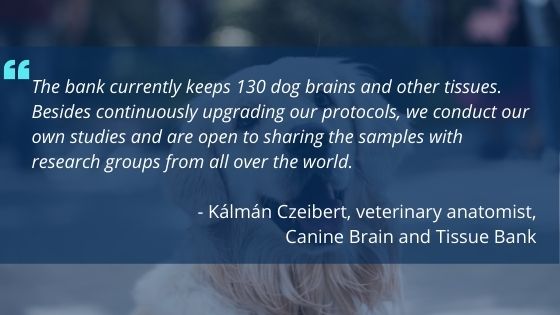The aging process and the emergence of neurological pathologies span many years in humans. Yet, it is challenging to investigate the initial steps of aging and neurodegenerative processes because most donors of brain samples who exhibit no symptoms are not diagnosed at the early stages of the disease due to the lack of effective screening. These are some of the main reasons why scientists are turning to short-lived model organisms to study aging.

The Hungarian Canine Brain and Tissue Bank (CBTB) was established by the research team of the Senior Family Dog Project in 2017 to address this need. Although dogs have a much shorter lifespan than humans, the aging process of the two species has remarkable similarities. For instance, dogs tend to develop age-related diseases such as dementia, which is not typical for most other animals.
The ability to detect and predict individual tendencies and provide suitable interventions to shift the aging process to a healthier track is the aim of most aging research initiatives. Dogs mirror human aging at the cellular and molecular levels in many respects, making them ideal preclinical models and have therefore attracted the attention of aging researchers.
Click here to read more.